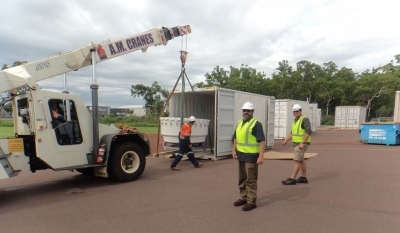
The third Tropical Western Pacific (TWP) site for the ARM Climate Research Facility was established in 2002 in Darwin, Australia. After twelve and a half years of collecting data, the site closed on December 31, 2014. Data from Darwin were particularly of interest because of its three distinctive climate patterns: A dry continental regime from about May to September, a wet monsoonal season (sometimes involving cyclones) from December to March, and a transitional period between the other two.
Operation of the Darwin site was a collaboration between the Australian Bureau of Meteorology and the TWP Program Office at Los Alamos National Laboratory. The Darwin facility also served as the technical support center for the two equatorial TWP facilities—Manus Island and Nauru. Darwin has been a wonderful and fruitful collaborative effort by many, who all collectively deserve our gratitude for such dedicated efforts.
“While it is with great sadness that the ARM fixed presence in the TWP is coming to a close, I am truly thankful to all who have given such superb effort and produced such a resounding success through the years.” said Chuck Long, TWP site scientist. “The long-term observations that have been produced by the ARM TWP are unprecedented in this part of the world, and will be used in atmospheric science for decades to come.”

The closing of the Darwin site brings an end to ARM’s long-term presence in the TWP. While there remains a need for continued research in the tropics, there is always the possibility that the ARM Facility may return to the region through mobile facility campaigns. Note that all ARM TWP observational data are still available in the ARM Data Archive.
“The vast amount of data gathered at the TWP will be used for many years to help us better model and predict climate function and is a testament to the hard work, commitment and dedication of a large number of personnel,” said Paul Ortega, TWP Site Operations Manager from Los Alamos National Laboratory.
“Our greatest thanks is extended to the host countries and the people that we had the honor of working with in the Republic of Nauru, Papua New Guinea and Australia. I will truly miss working with them.”
Read more about the TWP site closure in Heartfelt Goodbye to Manus Island.
# # #
The ARM Climate Research Facility is a national scientific user facility funded through the U.S. Department of Energy’s Office of Science. The ARM Facility is operated by nine Department of Energy national laboratories.

